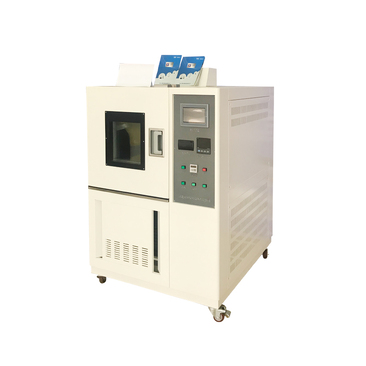Suppliers for Smoke Density Testing Chambers and Equipment Solutions
The Importance of Smoke Density Test Chambers A Guide for Suppliers
In the world of fire safety and material testing, the need for reliable smoke density test chambers cannot be overstated. These specialized testing environments play a critical role in assessing the smoke generation characteristics of various materials, which is essential for ensuring public safety and compliance with regulatory standards. This article explores the significance of smoke density test chambers, the key features to look for in suppliers, and how these devices contribute to overall safety in various industries.
Understanding Smoke Density Testing
Smoke density testing is a vital process used to determine the amount of smoke produced by materials when burned. This is crucial for understanding how materials will behave in a fire scenario. High smoke density can reduce visibility and contribute to harmful inhalation risks, making it imperative for architects, builders, and safety professionals to select materials that minimize smoke production during a fire.
Smoke density is usually measured in terms of optical density or light transmission, and results from such tests inform the selection of materials for buildings, railways, airplanes, and other safety-sensitive applications. By conducting these tests, manufacturers and regulatory bodies can ensure that materials meet national and international safety standards.
Features of an Effective Smoke Density Test Chamber
When searching for smoke density test chamber suppliers, it’s important to consider several key features that ensure the efficiency and accuracy of the testing process
1. Compliance with Standards Suppliers should provide test chambers that comply with established standards, such as ASTM E662 or ISO 5659. These standardization protocols ensure that the testing environment replicates real-world conditions and produces reliable results.
2. User-Friendly Interface An intuitive and easy-to-use control system is essential. Advanced smoke density test chambers come equipped with digital displays and automated features that simplify operation and data collection.
smoke density test chamber suppliers

3. Robust Construction Given that these chambers are subjected to high temperatures and the presence of smoke, they should be built with durable, fire-resistant materials. This not only ensures the longevity of the equipment but also the safety of the testing environment.
4. Data Logging and Analysis Modern smoke density test chambers often come equipped with data logging capabilities that allow for real-time monitoring and analysis. This feature is vital for generating accurate reports and improving future testing protocols.
5. Versatility A good test chamber should accommodate various materials, from building composites to textiles, providing suppliers and testers with the flexibility they need for diverse applications.
The Role of Suppliers in Promoting Safety
Suppliers of smoke density test chambers play a critical role in the fire safety landscape. They not only provide the equipment for testing but also often offer expertise in setting up testing procedures, conducting training sessions, and ensuring compliance with regulatory requirements. Establishing a strong partnership with a reputable supplier is crucial for businesses that prioritize safety and aim to stay compliant with evolving standards.
When selecting a supplier, consider their industry reputation, customer reviews, and the level of customer service they provide. Engaging with suppliers who are knowledgeable and experienced can greatly enhance the safety testing process and ensure that you are using equipment that meets your specific needs.
Conclusion
In conclusion, smoke density test chambers are vital tools in the field of fire safety, assisting in the evaluation of material behavior under fire conditions. Choosing the right supplier is essential for obtaining high-quality testing equipment that meets safety standards and contributes to the development of safer communities. As industries continue to innovate and materials evolve, the emphasis on smoke density testing will likely grow, making it more important than ever to invest in reliable test chambers and partnerships with skilled suppliers. The collective goal is clear to enhance safety measures, protect lives, and ensure that our built environment is as safe as possible in the event of a fire.
-
Why the Conductor Resistance Constant Temperature Measurement Machine Redefines Precision
NewsJun.20,2025
-
Reliable Testing Starts Here: Why the High Insulation Resistance Measuring Instrument Is a Must-Have
NewsJun.20,2025
-
Flexible Cable Flexing Test Equipment: The Precision Standard for Cable Durability and Performance Testing
NewsJun.20,2025
-
Digital Measurement Projector: Precision Visualization for Modern Manufacturing
NewsJun.20,2025
-
Computer Control Electronic Tensile Tester: Precision and Power for the Modern Metal Industry
NewsJun.20,2025
-
Cable Spark Tester: Your Ultimate Insulation Assurance for Wire and Cable Testing
NewsJun.20,2025
 Copyright © 2025 Hebei Fangyuan Instrument & Equipment Co.,Ltd. All Rights Reserved. Sitemap | Privacy Policy
Copyright © 2025 Hebei Fangyuan Instrument & Equipment Co.,Ltd. All Rights Reserved. Sitemap | Privacy Policy
